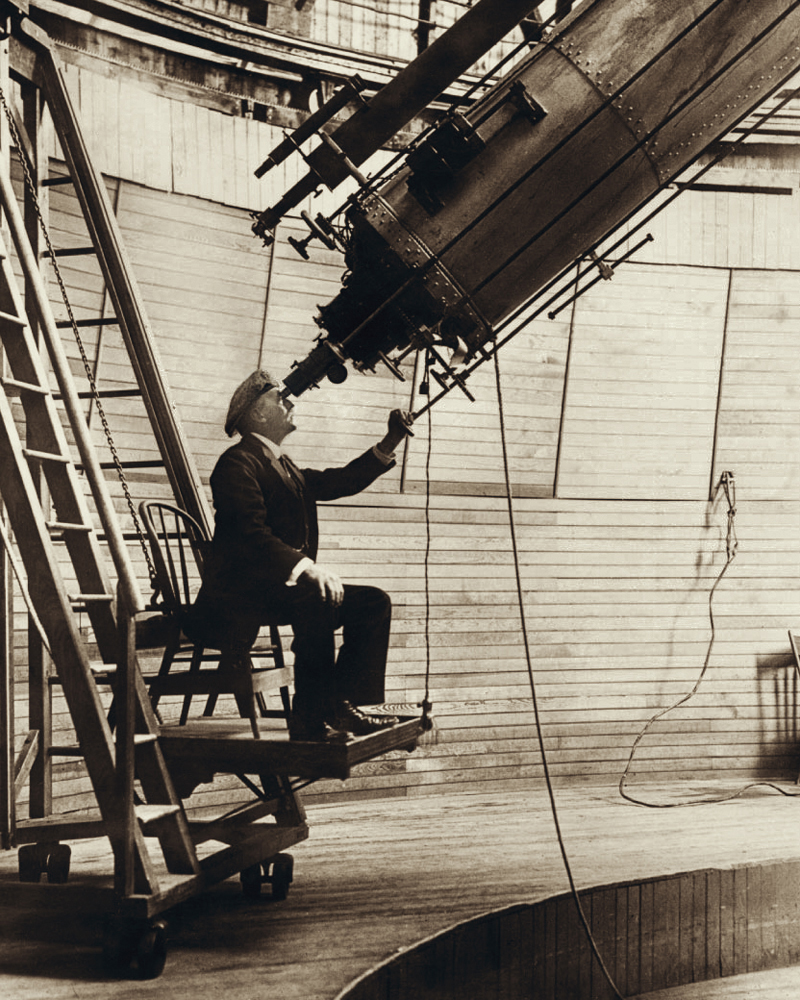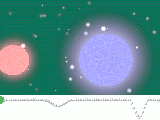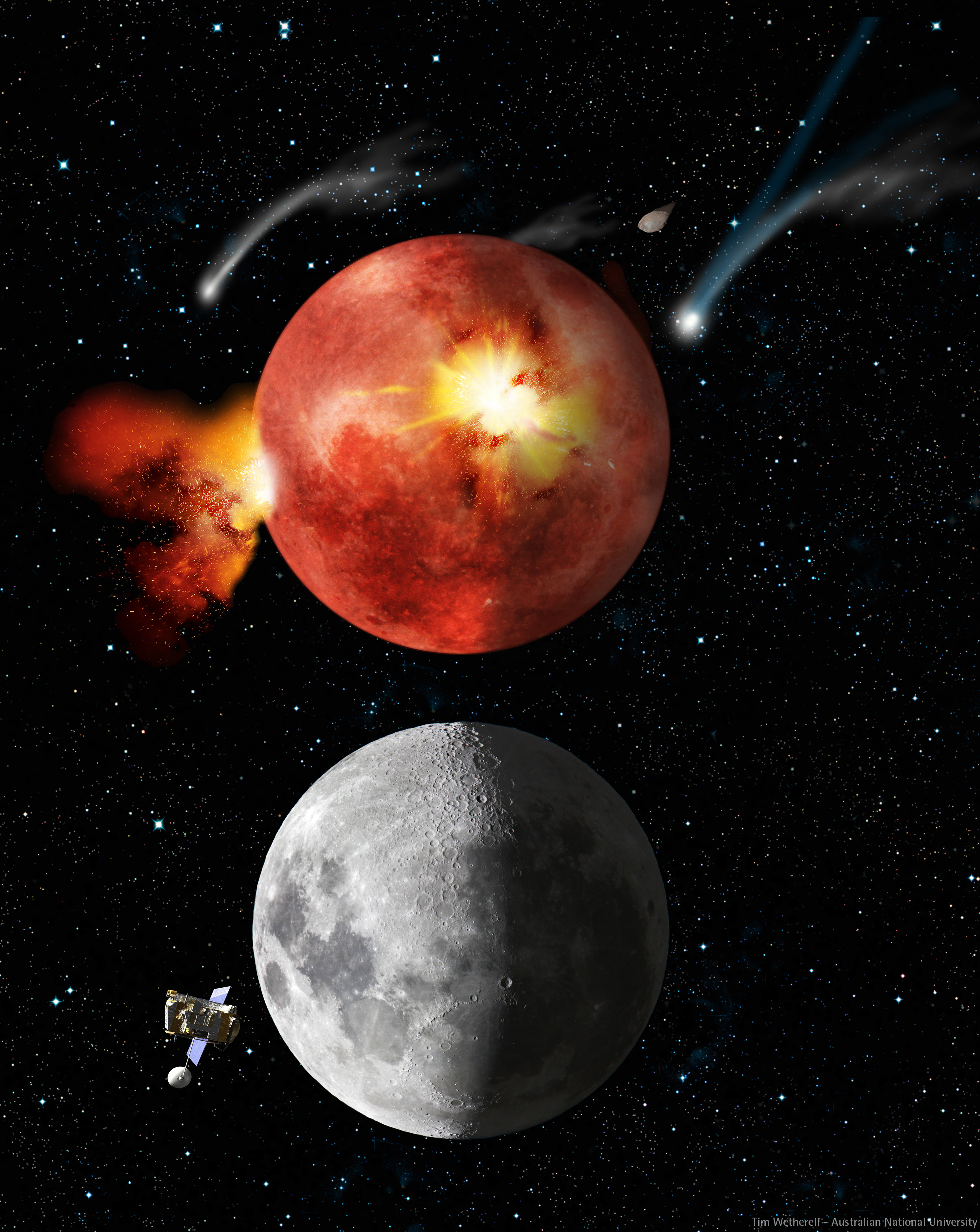|
Fifth Planet (hypothetical)
In the history of astronomy, a handful of Solar System bodies have been counted as the fifth planet from the Sun. Under the present definition of a planet, Jupiter is counted as the fifth. Hypotheses There are three main ideas regarding hypothetical planets between Mars and Jupiter. Asteroids During the early 19th century, as asteroids were discovered, they were considered planets. Jupiter became the sixth planet with the discovery of Ceres in 1801. Soon, three more asteroids, Pallas (1802), Juno (1804), and Vesta (1807) were discovered. They were counted as separate planets, despite the fact that they share a single orbital spacing given by Titius–Bode law. Between 1845 and 1851, eleven additional asteroids were discovered and Jupiter had become the twentieth planet. At this point, astronomers began to classify asteroids as minor planets. Following the reclassification of the asteroids in their own group, Jupiter became the fifth planet once again. With the redefinition ... [...More Info...] [...Related Items...] OR: [Wikipedia] [Google] [Baidu] |
Five-planet Nice Model
The five-planet Nice model is a numerical model of the early Solar System that is a revised variation of the Nice model. It begins with five giant planets, the four that exist today plus an additional ice giant between Saturn and Uranus in a chain of mean-motion resonances. After the resonance chain is broken, the five giant planets undergo a period of planetesimal-driven migration, followed by a period of orbital instability with gravitational encounters between planets similar to that in the original Nice model. During the instability the additional giant planet is scattered inward onto a Jupiter-crossing orbit and is ejected from the Solar System following an encounter with Jupiter. The model was first formally proposed in 2011 after simulations indicated that it was more likely to reproduce the current Solar System than a four-planet Nice model. A five-planet Nice model The following is a version of the five-planet Nice model that results in an early instability and repro ... [...More Info...] [...Related Items...] OR: [Wikipedia] [Google] [Baidu] |
Hypothetical Planetary Object
Various unknown astronomical objects have been hypothesized throughout recorded history. For example, in the 5th century BCE, the philosopher Philolaus defined a hypothetical astronomical object which he called the "Central Fire", around which he proposed other celestial bodies (including the Sun) moved.Marco Ceccarelli, ''Distinguished Figures in Mechanism and Machine Science'' (2007), p. 124. Types of hypothetical astronomical objects Hypothetical astronomical objects have been speculated to exist both inside and outside of the Solar System, and speculation has included different kinds of stars, planets, and other astronomical objects. * For hypothetical astronomical objects in the Solar System, see: List of hypothetical Solar System objects * For hypothetical stars, see: Hypothetical star * For hypothetical brown dwarfs, see: List of brown dwarfs * For hypothetical black holes, see: Hypothetical black hole * For extrasolar moons, all of which are currently hypothetical, se ... [...More Info...] [...Related Items...] OR: [Wikipedia] [Google] [Baidu] |
Ancient Astronomy
Astronomy is the oldest of the natural sciences, dating back to antiquity, with its origins in the religious, mythological, cosmological, calendrical, and astrological beliefs and practices of prehistory: vestiges of these are still found in astrology, a discipline long interwoven with public and governmental astronomy. It was not completely separated in Europe (see astrology and astronomy) during the Copernican Revolution starting in 1543. In some cultures, astronomical data was used for astrological prognostication. Early history Early cultures identified celestial objects with gods and spirits. They related these objects (and their movements) to phenomena such as rain, drought, seasons, and tides. It is generally believed that the first astronomers were priests, and that they understood celestial objects and events to be manifestations of the divine, hence early astronomy's connection to what is now called astrology. A 32,500-year-old carved ivory mammoth tusk could contai ... [...More Info...] [...Related Items...] OR: [Wikipedia] [Google] [Baidu] |
Trans-Neptunian Objects In Fiction
A trans-Neptunian object (TNO), also written transneptunian object, is any minor planet in the Solar System that orbits the Sun at a greater average distance than Neptune, which has a semi-major axis of 30.1 astronomical units (au). Typically, TNOs are further divided into the Classical Kuiper belt object, classical and Resonant trans-Neptunian object, resonant objects of the Kuiper belt, the scattered disc and detached objects with the sednoids being the most distant ones. As of October 2020, the List of minor planets#Main index, catalog of minor planets contains List of trans-Neptunian objects, 678 numbered and more than List of unnumbered trans-Neptunian objects, 2,000 unnumbered TNOs. The first trans-Neptunian object to be Planets beyond Neptune, discovered was Pluto in 1930. It took until 1992 to discover a second trans-Neptunian object orbiting the Sun directly, 15760 Albion. The most massive TNO known is Eris (dwarf planet), Eris, followed by Pluto, , , and . More than M ... [...More Info...] [...Related Items...] OR: [Wikipedia] [Google] [Baidu] |
Trans-Neptunian Object
A trans-Neptunian object (TNO), also written transneptunian object, is any minor planet in the Solar System that orbits the Sun at a greater average distance than Neptune, which has a semi-major axis of 30.1 astronomical units (au). Typically, TNOs are further divided into the classical and resonant objects of the Kuiper belt, the scattered disc and detached objects with the sednoids being the most distant ones. As of October 2020, the catalog of minor planets contains 678 numbered and more than 2,000 unnumbered TNOs. The first trans-Neptunian object to be discovered was Pluto in 1930. It took until 1992 to discover a second trans-Neptunian object orbiting the Sun directly, 15760 Albion. The most massive TNO known is Eris, followed by Pluto, , , and . More than 80 satellites have been discovered in orbit of trans-Neptunian objects. TNOs vary in color and are either grey-blue (BB) or very red (RR). They are thought to be composed of mixtures of rock, amorphous carbon and ... [...More Info...] [...Related Items...] OR: [Wikipedia] [Google] [Baidu] |
Planets Beyond Neptune
Following the discovery of the planet Neptune in 1846, there was considerable speculation that another planet might exist beyond its orbit. The search began in the mid-19th century and continued at the start of the 20th with Percival Lowell's quest for Planet X. Lowell proposed the Planet X hypothesis to explain apparent discrepancies in the orbits of the giant planets, particularly Uranus and Neptune, speculating that the gravity of a large unseen ninth planet could have perturbed Uranus enough to account for the irregularities. Clyde Tombaugh's discovery of Pluto in 1930 appeared to validate Lowell's hypothesis, and Pluto was officially named the ninth planet. In 1978, Pluto was conclusively determined to be too small for its gravity to affect the giant planets, resulting in a brief search for a tenth planet. The search was largely abandoned in the early 1990s, when a study of measurements made by the ''Voyager 2'' spacecraft found that the irregularities observed in ... [...More Info...] [...Related Items...] OR: [Wikipedia] [Google] [Baidu] |
Hypothetical Planetary Object
Various unknown astronomical objects have been hypothesized throughout recorded history. For example, in the 5th century BCE, the philosopher Philolaus defined a hypothetical astronomical object which he called the "Central Fire", around which he proposed other celestial bodies (including the Sun) moved.Marco Ceccarelli, ''Distinguished Figures in Mechanism and Machine Science'' (2007), p. 124. Types of hypothetical astronomical objects Hypothetical astronomical objects have been speculated to exist both inside and outside of the Solar System, and speculation has included different kinds of stars, planets, and other astronomical objects. * For hypothetical astronomical objects in the Solar System, see: List of hypothetical Solar System objects * For hypothetical stars, see: Hypothetical star * For hypothetical brown dwarfs, see: List of brown dwarfs * For hypothetical black holes, see: Hypothetical black hole * For extrasolar moons, all of which are currently hypothetical, se ... [...More Info...] [...Related Items...] OR: [Wikipedia] [Google] [Baidu] |
Disrupted Planet
In astronomy, a disrupted planet is a planet or exoplanet or, perhaps on a somewhat smaller scale, a planetary-mass object, planetesimal, moon, exomoon or asteroid that has been disrupted or destroyed by a nearby or passing astronomical body or object such as a star. Necroplanetology is the related study of such a process. Nonetheless, the result of such a disruption may be the production of excessive amounts of related gas, dust and debris, which may eventually surround the parent star in the form of a circumstellar disk or debris disk. As a consequence, the orbiting debris field may be an " uneven ring of dust", causing erratic light fluctuations in the apparent luminosity of the parent star, as may have been responsible for the oddly flickering light curves associated with the starlight observed from certain variable stars, such as that from Tabby's Star (KIC 8462852), RZ Piscium and WD 1145+017. Excessive amounts of infrared radiation may be detected from such stars, suggesti ... [...More Info...] [...Related Items...] OR: [Wikipedia] [Google] [Baidu] |
Hadean
The Hadean ( ) is a Eon (geology), geologic eon of History of Earth, Earth history preceding the Archean. On Earth, the Hadean began with the Formation of the Earth, planet's formation about 4.54 billion years ago (although the start of the Hadean is defined as the age of the oldest solid material in the Solar System, found in some meteorites, about 4.567 billion years old). The Hadean ended, as defined by the International Commission on Stratigraphy (ICS), 4 billion years ago. , the ICS describes its status as "informal". Hadean rocks are very rare, largely consisting of Zircon, zircons from one locality in Western Australia. Hadean geophysical models remain controversial among Geologist, geologists: it appears that plate tectonics and the growth of continents may have started in the Hadean. Earth in the early Hadean had a very thick carbon dioxide atmosphere, but eventually oceans of liquid water formed. Etymology "Hadean" (from Hades, the Greek god of the underwo ... [...More Info...] [...Related Items...] OR: [Wikipedia] [Google] [Baidu] |
Late Heavy Bombardment
The Late Heavy Bombardment (LHB), or lunar cataclysm, is a hypothesized event thought to have occurred approximately 4.1 to 3.8 billion years (Ga) ago, at a time corresponding to the Neohadean and Eoarchean eras on Earth. According to the hypothesis, during this interval, a disproportionately large number of asteroids and comets collided with the early terrestrial planets in the inner Solar System, including Mercury, Venus, Earth and Mars. These came from both post-accretion and planetary instability-driven populations of impactors. Although widely accepted, it remains difficult to prove conclusively. Evidence for the LHB derives from rock samples of Moon craters brought back by the Apollo astronauts. Isotopic dating showed that the rocks were last molten during impact events in a rather narrow interval of time, suggesting that a large proportion of craters were formed during this period. Several hypotheses attempt to explain this apparent spike in the flux of impactors in ... [...More Info...] [...Related Items...] OR: [Wikipedia] [Google] [Baidu] |
Jack J
Jack may refer to: Places * Jack, Alabama, US, an unincorporated community * Jack, Missouri, US, an unincorporated community * Jack County, Texas, a county in Texas, USA People and fictional characters * Jack (given name), a male given name, including a list of people and fictional characters with the name * Jack (surname), including a list of people with the surname * Jack (Tekken), multiple fictional characters in the fighting game series ''Tekken'' * Jack the Ripper, an unidentified British serial killer active in 1888 * Wolfman Jack (1938–1995), a stage name of American disk jockey Robert Weston Smith * New Jack, a stage name of Jerome Young (1963-2021), an American professional wrestler * Spring-heeled Jack, a creature in Victorian-era English folklore Animals and plants Fish *Carangidae generally, including: **Almaco jack **Amberjack **Bar jack **Black jack (fish) **Crevalle jack **Giant trevally or ronin jack **Jack mackerel **Leather jack **Yellow jack *Coho salmon, ... [...More Info...] [...Related Items...] OR: [Wikipedia] [Google] [Baidu] |
Fringe Science
Fringe science refers to ideas whose attributes include being highly speculative or relying on premises already refuted. Fringe science theories are often advanced by persons who have no traditional academic science background, or by researchers outside the mainstream discipline. The general public has difficulty distinguishing between science and its imitators, and in some cases a "yearning to believe or a generalized suspicion of experts is a very potent incentive to accepting pseudoscientific claims". The term "fringe science" covers everything from novel hypotheses which can be tested by means of the scientific method to wild ad hoc hypotheses and mumbo jumbo. This has resulted in a tendency to dismiss all fringe science as the domain of pseudoscientists, hobbyists, and quacks. A concept that was once accepted by the mainstream scientific community may become fringe science because of a later evaluation of previous research. For example, focal infection theory, which hel ... [...More Info...] [...Related Items...] OR: [Wikipedia] [Google] [Baidu] |

.jpg)





